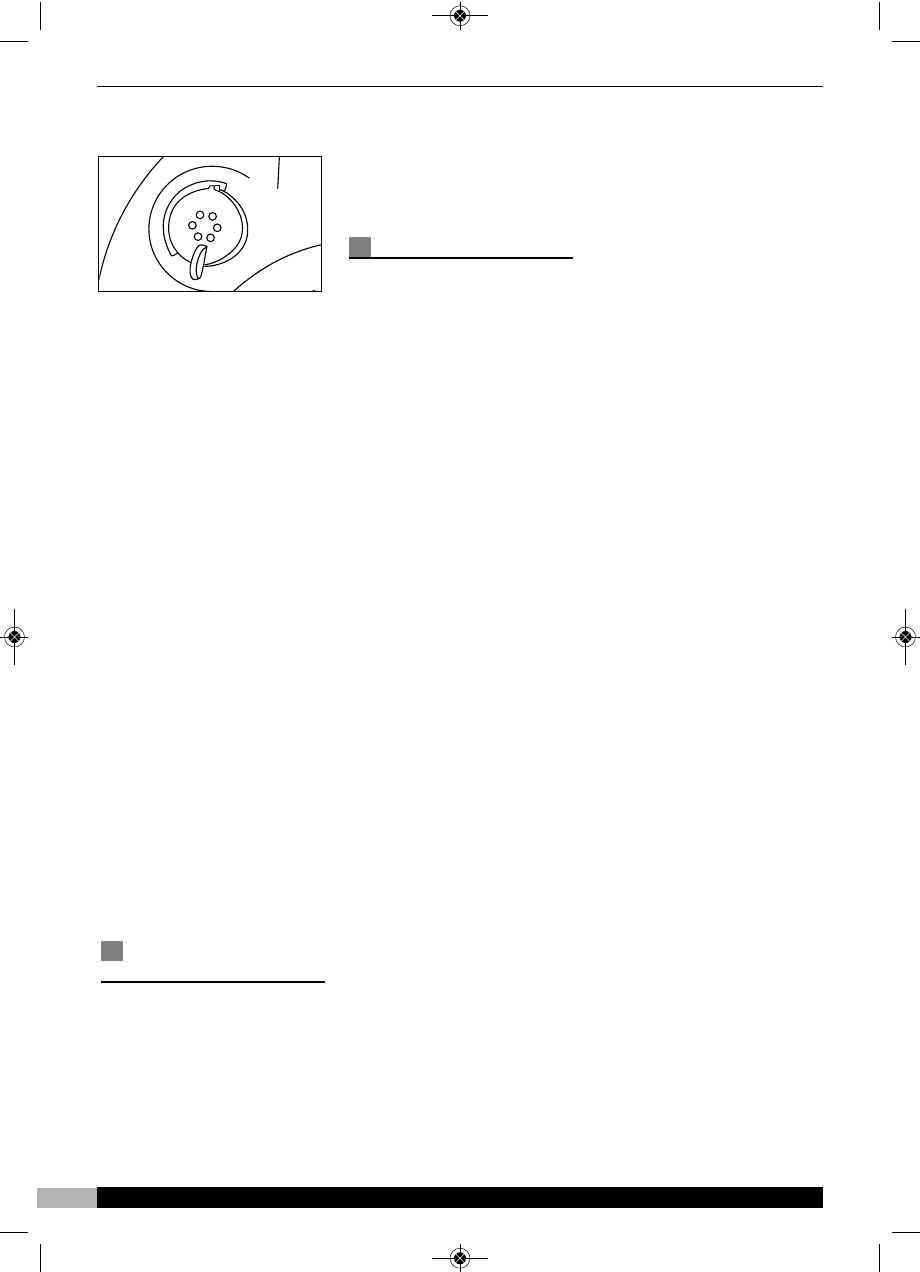
8
UK Helpline 0844 871 0956 Replacement Parts 0844 873 0722 Ireland Helpline 1800 409 119
release steam and reduce
pressure E.
During the heat cycle, steam
will escape from the vent.
This is normal, and self
controlling.
WARNING: you must keep
your face well away from
the valve when releasing
excess pressure, and only
do this when you are
wearing protective oven
gloves. It is not
recommended to release
steam manually with
recipes containing lots of
liquid, such as soups and
stews.
Pressure is completely
reduced when the Steam
Release Dial is in the ‘VENT’
position E,
and you no longer hear
steam escaping from the
valve, and the lid opens freely
with no force. Only then is it
safe to remove the Rapid
Cook lid and serve the food.
Remove lid by grasping the
handle and twisting the lid
anti-clockwise. As a safety
feature, the lid will not open
unless all pressure is
reduced. DO NOT force the
lid open if it does not open
freely, this means the unit is
still under pressure.
Using the
steaming tray
• If using the trivet and tray Ú
to steam vegetables, use the
appropriate amount of water.
The tray needs to stand on
the trivet to keep the
vegetables above the base
and out of the boiling water.
Note: When using the tray,
the amount of vegetables
that can be cooked is limited
to the trays capacity. See the
amounts in the recipes for
quantities.
HELPFUL HINTS
• Read this manual thoroughly
and follow all
recommendations.
• Be familiar with the recipe
and have all ingredients
ready before you begin.
• Be sure the lid is secured
properly before beginning.
• You may wish to brown some
meats before cooking with
other ingredients. To do so,
select browning function and
preheat for 5 minutes without
lid. Add oil to brown meat.
Do not cover when browning.
• Cut foods into uniform-size
pieces to promote even
cooking. In recipes that call
for various ingredients, cut
those that cook more quickly
into larger pieces and those
that cook more slowly into
smaller pieces.
• Many different cooking
liquids can be used in a
pressure cooker: wine, beer,
bouillon, fruit juices, water
and more.
• After becoming familiar with
your Rapid Cook, you can
convert conventional recipes
for pressure cooking. In
general, reduce cooking
times by two-thirds. The
amount of liquid used may
also have to be adjusted
because there is very little
evaporation from the
pressure cooker. Reduce the
amount of liquid so there is
only about ½ cup more than
desired in the finished
product. Remember,
however, there must always
be some liquid in the
pressure cooker to form the
necessary steam. Try this
formula: 1 cup of liquid for
the first 15 minutes of
pressure cooking then 1/3
cup of liquid for each
subsequent 15 minutes.
• Since flavours are more
concentrated, reduce
amounts of herbs and
seasonings when converting
conventional recipes. Fresh
herbs are better for pressure
cooking than dried herbs.
• Generally speaking, pressure
cookers cook foods in about
1/3 the time of conventional
cooking methods.
• Increase cooking times by
about ten percent when
cooking in high altitudes over
3,500 feet.
• If you wish to cook food for
less time than the pre-
programmed amount, watch
the timer and press Cancel
when desired cooking time
has elapsed.
• Pressure will not be achieved
until the internal temperature
in the pot is 40 degrees
higher than the boiling point
of water. The cooking time
will not begin until pressure is
achieved.
• Always check to make sure
your gasket and float valve
are clean and in good
working order.
• We have included recipes
using the maximum level.
Use this as a guide when
creating or adapting your
own recipes. Do not fill above
the 3/5 max level.
• If food needs more cooking
select the 10 minutes
cooking cycle and press
start.
• Do not cook on the browning
function if using the steaming
tray and trivet.
Note: Raw meat is
perishable food, which
should not be left at room
temperature for more
than 2 hours. We advise
to not use the delay timer
when cooking recipes
that include meat
products.
V
E
N
T
S
E
A
L
V
E
N
T
E
48815 rev3_x 21/06/2010 10:11 Page 8


















